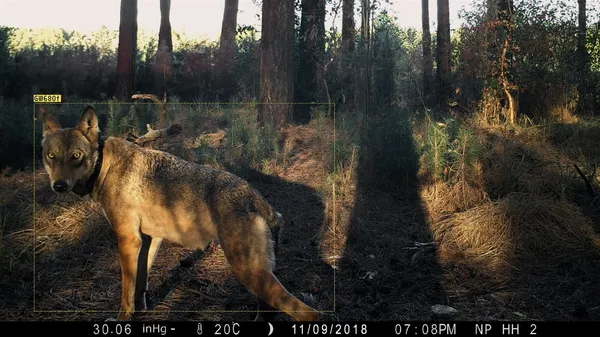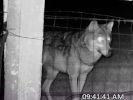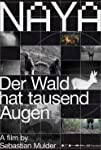Eye For Film >> Movies >> Naya (2021) Film Review
Naya
Reviewed by: Andrew Robertson

There is a saying among hunters, that you are never alone. For every pair of eyes looking out at the forest a thousand more stare back. The deep forests of Central Europe may not be the abyss but they gaze also.
This is the tale of Naya, a she-wolf fitted with a GPS tag. It is also a tale of bright eyed mustelids, restive badgers, placid hares, bumbling boars. An animal who travelled more than a thousand kilometres from Northern Germany to near Leopoldsburg. She may wish to be avoid human settlements but the reverse is not true.

Constructed of archive footage, news reports and interviews. The passage of her progress as observed from space. The profusion of surveillance cameras across the area. Cameras whose recordings are augmented with what seems to be artificially intelligent labelling. Small boxes that read [mouse] or [deer] or [badger][badger][badger][badger]. One of several conventions that may be a layer of unreality on a document couched in secrecy, to protect Naya from others. The carnal and the carnivore, the pixelated blur of the faces of fauna fucking a piece of fun in something often quite serious.
The panic of sheep when a wolf is upon the fold is palpable, trapped not just by fences but canals, the water of Wauberg no deterrent to a dogged hunter. Footage from the farm, the flock. Predators upon the domestic. Sheep, sheep, alpacas, sheep. Electric eyes show electric boundaries. Electric tension.
They telephone a threat. It may have come true.
Subtitled "Der Wald Hat Tausend Augen" (the world has a thousand eyes) this is a biography of an animal, GW680f, a "monitored" animal where the footage comes from surveillance cameras around the world. Rooted in almost deliberately archaic choices like pixel fonts and static, Sebastian Mulder's film is a stunning piece of documentary.
In Q&A at Glasgow's 2022 Short Film Festival Mulder talked about a desire to make a film about wildlife and voyeurism, the role of technology within it. The topic was so large that he was having trouble approaching it, but in 2018 he saw a piece in the news about wolves being spotted in Holland. "they were never seen", but when they were seen it was "grainy, pixelly kind of wolf creature". This lead him to further research and "the image of wild animal being portrayed in media", the story of Naya and the central question of that GPS collar. "it began there", as, indeed, the film does. At the beginning was on the questions was "if [he] would ever be able to see her" and with funds to travel to the sites in late 2019 "things happened".
The pre-recorded interviews add an edge to discussions about the sense that "there are cameras everywhere and you're being watched". He talked of websites where people "didn't know that they were livestream[ing]". The volume of surveillance material he had access to and the discovery of "people buying their own cameras", a parallel infrastructure of surveillance in private hands. With so much, described as a "crazy amount" of footage, he was asked about the processes of licensing and crediting. The credits do include contact details in case a copyright holder feels their material has been used, but even that almost parasitic act of surveillance adds to the element. He talked about a process of successive editing periods, knowing from each. "more than 500 different cameras that [he] recorded" with amounts from "one minute to eight hours" he doesn't know how much he actually has. The trail cameras take just 30 seconds at a time, but the human operated ones became part of a network where he could call and ask for shots.
A question about wider ecological themes gained something from the plants behind Mulder and his interlocutor, "why [he] wanted to tell these stories" about "our relationship with the natural world". The relationships between technology and ecology, the responsibility in each to use them "the right ways" gives a range to the ideas at least as large as Naya's. While he talked about the presence of the "pro-wolf or anti-wolf" debate not being the focus, but as they "happened while [he] was making the movie" he couldn't make it not about that. As the story developed the film did too, how "surveillance influenced the different parties", a further connection of the themes.
To have distilled so much into so small a space could and should be a potential concern, but here there's incredible strength from that concentration. Similar thematic weight is being explored with his current project, which involves the use of tiny GoPro cameras on animals affected by New Year's fireworks. It's a fascinating idea, and one of many interesting ones that can use this story of Naya as a jumping off point. The best documentaries depict interesting subjects in interesting ways and this is absolutely one of them, and well worth hunting out.
Reviewed on: 31 Mar 2022
















